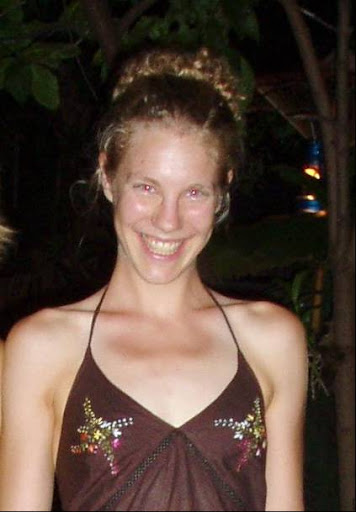Right now the time is 4 pm, Saturday afternoon. I haven’t slept since Friday at 5 am. Why? Last night I, along with other Realia students, hiked Gunung Merapi ("Mountain of Fire"), a volcanic mountain that towers over Yogyakarta. The mountain erupts frequently (the last time was 2006, when people along the slopes of the mountain were evacuated because of active lava flows) but is relatively quiet right now. The summit is about 2900 meters above sea level. See pictures here.
We began our journey at 10 pm Friday night, when a van and driver picked us up in Yogya and brought us along a windy road up into the mountains. We arrived in Selo, a small village on the slopes of Merapi, at about midnight. Sleepy and a bit disoriented, we piled into a small house and were offered tea and arak (hard alcohol made from rice). The arak was a surprise to me, because most people I’ve met in Jawa are Muslim and do not drink alcohol. Our hosts were drinking the arak with red bull and coke! I wonder if they learned this technique from foreign friends…
After hanging out at the house until 1 pm, we started the hike. The group consisted of: two guides, myself, Dessy, two women from Canada, and two men from Canada. Everyone was in high spirits as we started, and there was plenty of talking and laughing, at least for the first hundred-or-so feet of the climb. The steep slope and high elevation (we started the hike at around 1000 meters asl) affected everyone’s ability to converse, and the party became quiet as we started concentrating on breathing and finding good footholds on the slippery trail.
The hike was dreamlike for me: in the dark, quiet, with just a bit of moon and starlight and headlamps when the trail got rocky. It was hard to tell what kind of land use we were traveling through (given the darkness of the night) but my impression was of hiking through terraced agriculture fields. The walk was very steep, and as we climbed the temperature became almost uncomfortably cold. At about 2:30 am we heard the calls from the mosque in the village below, announcing the morning meal before puasa. One of our guides was planning to fast the coming day, so he ate and drank at this time.
At 4:30 am we arrived at a small plateau from which we could see the top of the mountain not too far above. The eastern sky was beginning to lighten, and we googled at the landscape of Java covered with clouds and dotted with old volcanoes. One of the guides and I decided to continue to the top of the mountain to see sunrise, while the rest of the party stayed below. As we walked up the hill I used my newly-learned Indonesian language to ask our guide all the questions I could think of. Perhaps the most interesting answers he gave were about his life: he grew up on Irian Jaya (Papua) but moved to Java about six years ago because his parents wanted to return to their native island (they were “transmigrated” to Papua by a government relocation program).
After a demanding and steep hike over a rocky slope, we finally reached the summit in time to rest and see the sun rise, a spectacular site. The top of the mountain is obviously volcano, with yellow sulfur deposits all around and rotten-egg-smelling steam spouting from the rocks. The top of the mountain was totally silent – no wind, no noise from the villages below, no talking. I’ve very rarely experienced such absolute and spectacular lack of noise. After taking sunrise pictures to my heart’s content, we made our way down the mountain, back to reality and the business of the city.
